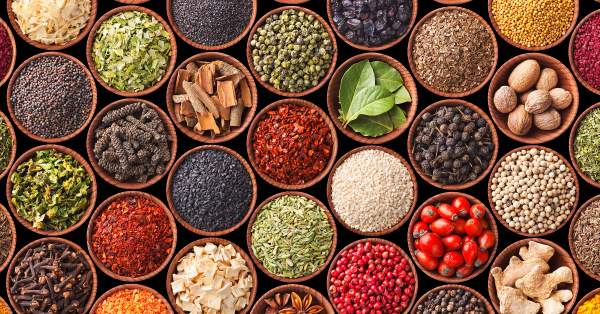Following the discovery of ‘added sugar’ in Nestle’s Indian baby food Cerelac, now Group 1 carcinogens i.e. no. 1 cancer causing agent Ethylene Oxide (EO) is found in Indian spices. Shockingly, this isn’t limited to local or cheap brands but includes well-known names in the Indian masala brands, MDH and Everest masala.
Health News: Indian Masala Brands MDH and Everest Contains Cancer Causing Agents
When and by whom was cancer in Indian spices discovered?
On April 5th, Hong Kong’s official food regulatory department, the Centre for Food Safety (CFS), published a report on their website. The report revealed the presence of pesticides in three Indian spice products—specifically Ethylene oxide, classified by The International Agency for Research on Cancer as a Group 1 carcinogen, the top-ranking cancer-causing agent.
What were the findings of the report?
The report highlighted that two MDH spices (Madras Curry Powder, Sambhar Masala) and one Everest spice (Fish Curry Masala) exceeded permissible chemical limits, primarily Ethylene oxide.
Why was test conducted on Indian spices by Hong Kong FDA and what actions followed the results?
The test was part of routine food surveillance by the CFS, not targeting any specific brand or product. Subsequent to the results, regulators directed vendors to withdraw these products from shelves. An ongoing investigation is underway, with plans for strict enforcement in the future.
Meanwhile, the Singapore Food Agency also noted the presence of cancer-causing agents surpassing permissible limits in Everest Fish Curry Masala in their April 18th report. They emphasized that while trace amounts of Ethylene oxide pose no immediate risk, prolonged exposure can trigger cancer cells. Thus, minimizing exposure is crucial.
European Union has identified Cancer-Causing Chemicals in 332 Indian Food Products
Shortly after reports from Hong Kong and Singapore, there were reports that disclosed European Union disclosed contamination in 527 products between September 2020 and April 2024. Among these, 313 were nuts and sesame seeds, 60 were herbs and spices, 48 were dietetic foods, and 34 were other products. Unfortunately, 332 of these products were of Indian origin, resulting in 87 consignments being halted at borders and withdrawn from markets due to heavy Ethylene oxide traces.
Surprisingly, 54 of these 527 products labeled as ‘Organic’ and some promoted as immunity enhancers. (Report)
Now you might wonder –
What’s the link between Indian spices and Ethylene Oxide?
Ethylene oxide (EO), a gas utilized as a preservative and fumigant in the food industry, particularly for storing and transporting grain, seeds, and nuts, is regulated due to its toxicity, along with its byproduct 2-chloroethanol. (Source)
Reports of EO contamination in sesame seed imports from India to the European Union (EU) in late 2020 led to product recalls in several countries. Since 1991, the EU has banned EO, with stringent withdrawal requirements enforced since July 2021 for products exceeding the limit of quantification (LOQ) of 0.1 mg/kg. Recent detections of EO in locust bean gum and imported instant ramen from Korea have prompted reviews of contamination limits and import regulations.
In September 2021, the Spices Board advised exporters to conduct tests, yet 121 contaminated products surfaced in 2022 and 2023, reflecting the challenge in maintaining Indian product quality.
CIL has developed stable isotope-labeled and native 2-chloroethanol standard solutions and is working on EO standard solutions to support researchers. These standards, qualifying as low-level exempt quantities, offer a solution to shipping restrictions associated with neat EO material.
Also Read:
Why and How Ethylene Oxide Causes Cancer
Ethylene oxide (EO) is classified as a carcinogen because it has been linked to an increased risk of cancer in humans. This classification is based on extensive scientific research and evidence from studies conducted on both animals and humans. (Source)
The mechanism by which ethylene oxide causes cancer involves its ability to damage DNA. Ethylene oxide is highly reactive and can bind to DNA molecules, forming DNA adducts or mutations. These alterations in the DNA structure can interfere with normal cellular processes, including cell growth, division, and repair.
When DNA damage occurs and is not repaired properly, it can lead to the development of cancer. Specifically, ethylene oxide exposure has been associated with an increased risk of certain types of cancer, including leukemia, lymphoma, and breast cancer. (Source)
Ethylene oxide can also disrupt the function of key cellular proteins involved in cell cycle regulation and apoptosis (programmed cell death), further contributing to the development of cancer.
Overall, the carcinogenic effects of ethylene oxide are primarily attributed to its ability to damage DNA and interfere with essential cellular processes, ultimately leading to the uncontrolled growth and proliferation of cancer cells. (Source: National Cancer Institute)
Indian Masala Brands Cancer Connection: Should the Indian government ban these spices?
Certainly, the Indian government should enact strict policies, imposing restrictions and limitations on chemical treatment. The Indian FDA must enhance vigilance, perhaps exploring gamma-ray treatment as an alternative to chemical methods.
Now consider the implications for exported food products; what impact will this have on the local market? Just imagine!
Would you still consume these spices? Do mention in the comment section.

P.S: Such revelations about Indian masala is a clear cut indicator that we might have to grind it at home or buy from the ones that grind it at home, to avoid any type of adulteration, let alone cancer causing agents like ethylene oxide.
Also Read: The Truth About Flavored Yogurt: Know Why It’s More Harmful Than Healthy





